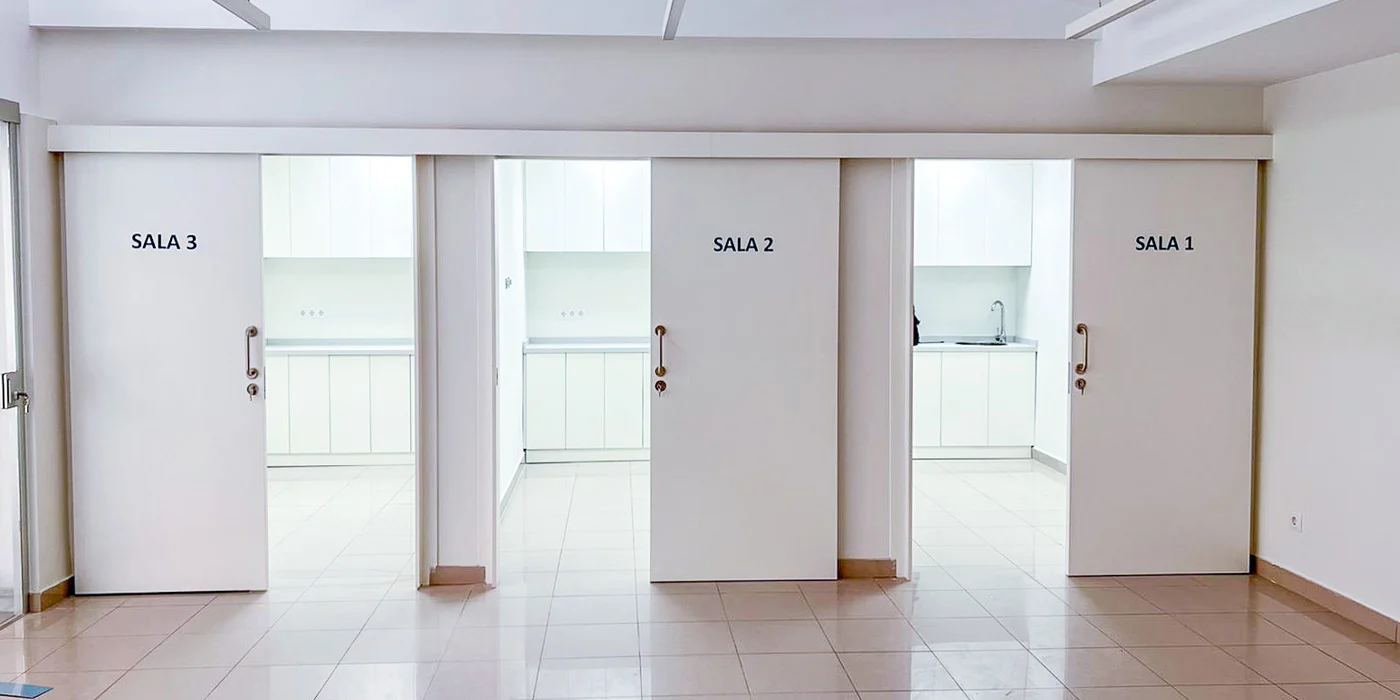Pharmaceutical companies, laboratories and biotech companies are undertaking the refurbishment of their facilities (both production and offices) to increase their productivity and exceed their business goals.
They are committed to greater technological integration, which eases remote work, as well as more flexible and agile spaces, allowing greater collaboration between teams, while improving the well-being and safety of their employees. All of this, considering standards that are respectful of the environment.
From Cador, we give you a summary of the current trends when distributing, designing, building and equipping a modern laboratory and its office:
1. Collaborative design
The creation of common spaces, such as conference rooms and breakout areas, as well as the implementation of collaborative technologies, such as interactive displays and videoconferencing systems, foster collaboration, and synergies.
2. Flexibility and modularity
Increasingly, laboratories are designed to be highly flexible and modular to easily adapt to changing laboratory needs. The use of movable wall systems and modular furniture makes it possible to reconfigure the space to suit different projects and equipment.

3. Sustainability
In recent years, sustainability has become a key factor in the planning and construction of all types of buildings, including laboratories. Adopting sustainable practices can help reduce environmental impact, improve energy efficiency, and reduce long-term costs. This includes selecting sustainable materials, using renewable technologies, maximizing energy efficiency in lighting and HVAC, and planning an efficient water management system.
4. Security
Safety is a major concern in any laboratory, especially when working with hazardous materials and products. Therefore, laboratories must include adequate measures, such as safe storage areas, effective ventilation and emergency or fire detection systems.
5. Connectivity and mobility
The labs are designed to supply seamless connectivity and mobility. This is achieved by implementing high-speed networks, high-speed internet access, and incorporating mobile devices and mobility technologies to allow access to data and tools from anywhere. This enables greater efficiency and collaboration, as well as greater flexibility for workers, who can access data and tools from anywhere, at any time.
6. Accessibility
The incorporation of ramps, elevators, and escalators, as well as the implementation of assistive technologies such as screen reading software and sound amplification systems are some of the improvements that can be made in laboratories in terms of accessibility for people with visual and hearing disabilities. Not only does this improve the experience for these employees, but it also helps to promote an inclusive environment for the rest of the lab users.

It is important to work with a team of specialized laboratory professionals to ensure that all necessary standards and requirements are met, and to ensure that the best performance is obtained from the available space. With a planned and well-thought-out approach, companies can improve their research, development and production capabilities and increase their competitiveness in the marketplace.


